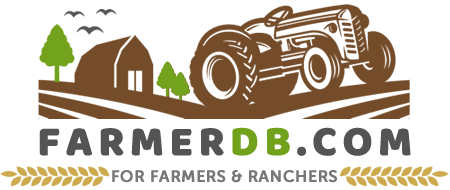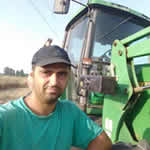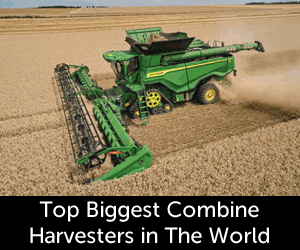Barzona is a domestic beef cattle breed developed in 1940 in the Bradshaw Mountains of Arizona, United States, by a farmer named Francis Norwood Bard.
Francis wanted a cattle breed that could withstand a harsh environment with extreme temperatures, droughts, sparse rainfall, and scattered feed.
He and his wife started crossbreeding multiple breeds, including Africander, Hereford, Beef Shorthorn, Santa Gertrudis, and Angus.
The breed was officially recognized as an established cattle breed in 1968 and had its own association founded in the same year.
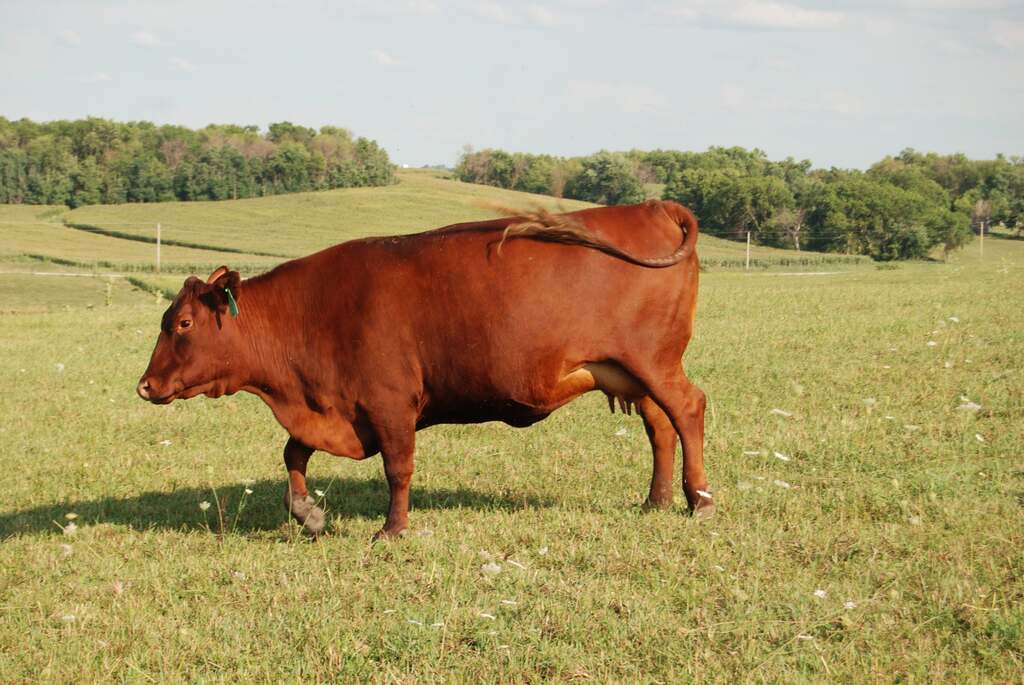
The Barzona cattle breed is not currently listed as at risk, but its population is relatively low, and it is not as common as other cattle breeds.
Contents
Characteristics
Color
These cattle have a solid red color, which can vary from light red to dark red. Some individuals may also have white markings on the belly or tail switch.
Skin
Since they were developed to be raised in hotter climates, the skin of these cattle is pigmented, having a darker color that protects them from sunburn. This pigmentation is common among breeds that thrive in hot and arid climates, such as Braford, Brahman, and Beefmaster.
Head, Eyes, Face
These cattle have a medium-sized, slightly elongated head with a broad forehead. The muzzle is well-developed, while the face has a straight or slightly convex profile. The eyes are large and dark, with pigmentation around them.
Horns
Barzona cattle can be either horned or polled.
This variation comes from the fact that multiple cattle breeds with both horned and polled characteristics were used in their development.
Body
Their body is well-proportioned and muscular, with a deep frame, strong topline, and a straight, long back.
The shoulders and neck have the same strong, muscular appearance as the rest of the body, while the hindquarters are well-defined and rounded.
The underline is clean and with no excessive loose skin. Cows have a well-attached udder with good teat placement, while bulls have a tight and muscular underline.
Legs
The legs are strong, and the hooves are dark, hard, and well-adapted for rough environments.
Size
Barzona cattle are classified as a medium-sized breed.
A medium-sized cattle can have an average body length of 51 to 57 inches (130 to 145 cm) and an average height of 55 to 59 inches (140 to 150 cm). But their actual size and characteristics, such as height, width, and length, can vary depending on the environment in which they are raised.
Lifespan
These cattle can live as long as the average beef cattle, which is around 10 to 15 years.
Their lifespan is influenced by genetics, management practices, diet, and environment.
Growth Rate
Weight
Bulls can grow up to 1,800 lbs (820 kg), and cows weigh about 1,100 lbs (500 kg).
Growth Rate and Slaughter Time
Barzona cattle have a balanced growth rate, not too slow, but not as fast as commercial breeds.
Calves are born at around 60 lbs (27 kg) and take 25 to 30 months to reach a good slaughter weight. For better meat quality, it’s best to let them grow 30 to 36 months, especially if they are raised exclusively on pasture. At this age, they develop a higher fat percentage of 12 to 20%, which improves the flavor and texture of the meat.
They take longer to finish compared to commercial breeds, but that’s expected since they aren’t part of the large-scale beef industry. Their growth prioritizes quality over speed.
Temperament
These cattle have a calm and manageable temperament. Cows are good mothers and take care of their calves well. Bulls are strong and active, with high energy for breeding.
One special trait of Barzona bulls is that they keep the herd together, which helps with handling and management.
Raising
Feeding
Some of the main feeds you can add to their diet include pasture grass such as Bermuda grass, fescue, or bromegrass, along with various woody plants and shrubs. Hay and silage, including alfalfa, clover, or mixed grass hay, work well for supplemental feeding. Another good option is crop residues, such as wheat straw, soybean, or corn stalks, if available.

Barzona cattle do well on pasture, whether it’s lush and high-quality or dry and sparse. One of the reasons they were developed was to survive and maintain good weight on low feed intake.
When pasture is low, their natural instinct is to walk and find new grazing areas. They can travel long distances in search of food and water.
If you want to achieve greater slaughter weight, you can grain-feed them. Adding corn, barley, oats, or sorghum 150 to 180 days before slaughter will help increase marbling in the meat and speed up weight gain.
Environment
You can raise these cattle in the following environments:
- Large, open pasture
- Rough terrain and rangeland
Climate
The ideal climates for these cattle are arid, semi-arid, and hot.
Apart from the climate they were originally developed for, they can also adapt to temperate climates.
Less suitable climates include areas with very cold temperatures or excessive moisture. If you live in a colder climate, they may not be the best choice.
Shelter
In most cases, they do not need shelter.
But during severe storms, heavy rainfall, or extended periods of freezing temperatures, they should have basic shelter to stay comfortable and protected from the elements. Outside of these conditions, they can live outdoors year-round without needing the traditional barns that other breeds require.
How many cattle per acre?
You need 2 to 2.5 acres per cattle in low-pasture conditions. In areas with very high grass or moderate pasture, you can raise 1 or even 2 cattle per acre.
This breed requires fewer acres per animal compared to others because they are efficient at utilizing lower amounts of feed and can convert limited forage into good muscle growth.
Breeding
The Barzona cow becomes fertile and ready for breeding around 12 months and can have its first calf at around 2 years old.
Bulls, like cows, reach puberty early and are highly fertile.
You need to be careful around bulls during breeding season, as they can become aggressive.
Breeding occurs through natural mating, with bulls having a high libido and the ability to be introduced to multiple cows at once.
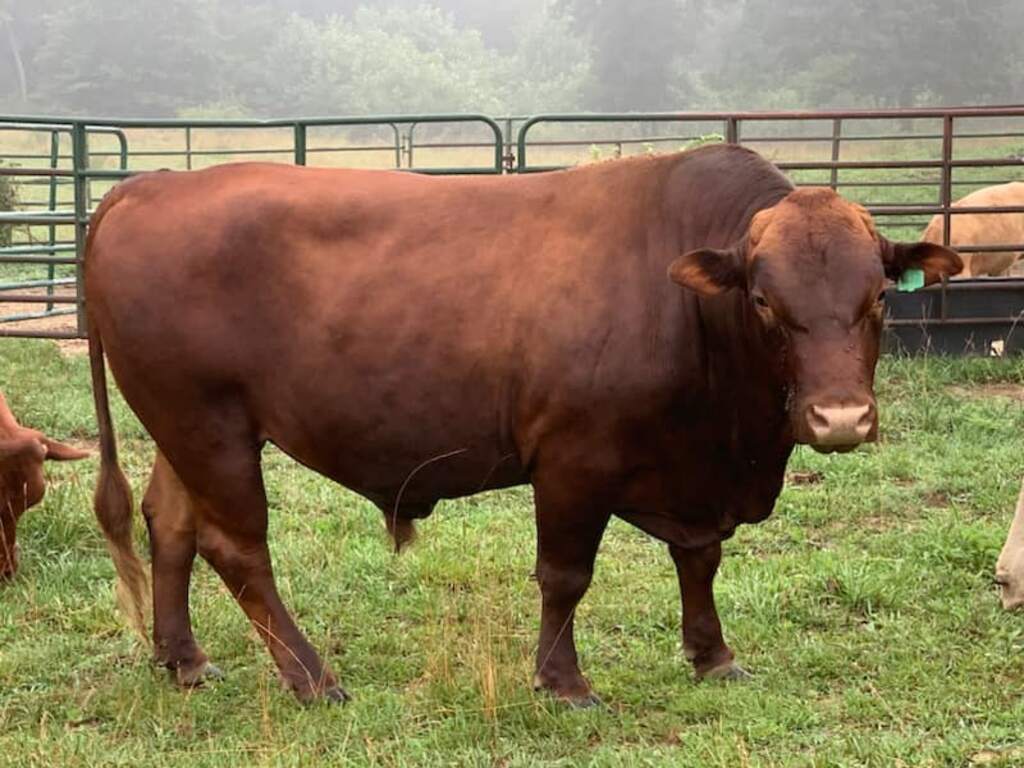
Both cows and bulls have a long productive life. Bulls remain good for breeding until 8 to 10 years old, while cows can continue calving even at 12 years old.
The gestation period for a Barzona cow is about 283 days. They have easy calving, as calves have a low birth weight.
Barzona cows are attentive and protective mothers. They take good care of their calves, and their milk production is sufficient to support healthy growth.
Terminal vs. Maternal
This breed’s traits, such as fertility, strong mothering instincts, calving ease, and good milk production, make it more of a maternal breed than a terminal one.
Health Issues
These cattle are naturally resistant to parasites and diseases. Thanks to the pigmentation around their eyes, they do not suffer from eye issues or eye cancer.
Compared to other breeds, they require little to no veterinary care or medication.
Advantages
- Heat and drought tolerance
- Parasite and disease resistance
- Strong maternal instincts
- Good grazing efficiency
- Hardy and low-maintenance
- Long productive life
- Good fertility and easy calving
- Strong legs and hooves
- Great meat quality
Disadvantages
- Moderate growth rate
- Not ideal for cold climates
- Aggressive bulls during breeding season
- Not common in large-scale beef operations
- Limited market availability
References
- Barzona Breeders Association link
Do you have any experience with the topic discussed here?
Would you like to improve the information shared and contribute your practical knowledge on the subject?
Your real-world experience as a farmer or rancher could greatly benefit other members, and the community would deeply appreciate your contribution.
